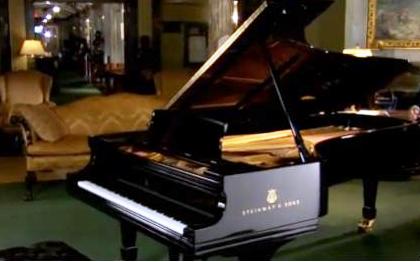
Best Digital piano reviews, for various price ranges. These pianos come with fully weighted keys and will appeal to trained/classical pianists and serious piano students.
Introduction
Here we have reviewed popular portable & upright digital pianos with weighted keys, includes 88-key arranger keyboards (with built-in styles, bells & whistles, weighted keys) as well.
We have listed the main features, their suitability, as well as their pros and cons to help you choose the right digital piano for your needs.
These are convenient, fully featured, downright enjoyable instruments; some of these can look beautiful too. Feel free to use them at home, on stage or in the studio.
The prices of these pianos may vary somewhat depending on the key action, sound quality, looks and features such as musical styles, effects, apps, etc.
These pianos are suited for buyers who would belong to one of these categories.
- Students who want a good digital piano with excellent piano action and piano sounds
- Those who already own a top of the line acoustic piano at home, but want an additional practice piano, something that is more portable, but without compromising on the action and the tonal quality.
- Families with talented kids (who have been playing for a few years and are showing great promise). Depending on the budget, parents may either buy a portable version with fully weighted keys or buy an upright piano (that looks like a real piano)
- There are many who opt for a portable digital version with fully weighted keys as it turns out to be a bit cheaper (by a few hundred dollars) than a console style digital piano
- Then there are some advanced players who want a digital piano (with the best possible action and sounds) that is suited for onstage performances as well. Such players are more interested in the music creation part as well, in addition to the performance part
Comparison Chart
Top Models
Yamaha DGX-670 (Value for Money)
Excellent digital piano for home use, comes with fully weighted keyboard, versatile styles and sounds.
Yamaha P515 (Mid Range)
Top model in the P series. Graded Hammer with Synthetic Ivory Keytops
256 Notes of Polyphony
Yamaha YDP184 Console Piano (home piano)
CFX Grand Piano samples, Graded Hammer 3 action (GH3) action
Polyphony: 256 Notes
Nord Stage-3 piano (High-End)
Stage piano with fully weighted hammer action keybed
120 voice polyphony, several performance features.
Portable Pianos: Budget to High
88-keys fully-weighted action, great sounds and touch, use it at home or stage. Perfect for the more experienced player. Feels and plays like a piano, but in a more portable version. You can read detailed review below.
- Yamaha P-515: Top piano in the P series
- Casio PX-560: Mid-range stage piano
- Kawai ES8: Excellent piano sounds, rugged build, use it as stage piano
Portable Pianos: Budget
Bit cheaper than the ones listed above. These ones have 88-keys fully-weighted action, perfect for intermediate players and for practice. Read detailed review below.
- Yamaha DGX-660
- Yamaha P-125
- Korg SP280
- Roland FP-30
- Casio PX-160
- Alesis Recital Pro
Upright/Home Pianos
These have the classic upright piano look, with great looks, three pedals, authentic keyboard touch and sounds.
- Yamaha YDP184R: The top model in the ARIUS series.
- Yamaha YDP-144 ARIUS
- Casio Privia PX-870
- The ONE Smart Piano
Professional Pianos
These piano are great for gigs and for creating music in the studio, cutting edge sounds, editing tools and interface designed for performing on-stage.
- Nord Stage-3
- Roland RD-2000
- Kawai MP11 . Roland FP-90
- Casio PX-560
Most of the digital pianos listed are priced around 1000 dollars, so in case you want a decent model with nice action and sounds, that is what you will need to spend. This aspect coupled with the fact that digital pianos are portable and affordable makes them an attractive alternative to acoustic pianos.
You can also checkout more bestselling keyboards and pianos here.
Best Digital Pianos: Reviews
Yamaha P-515
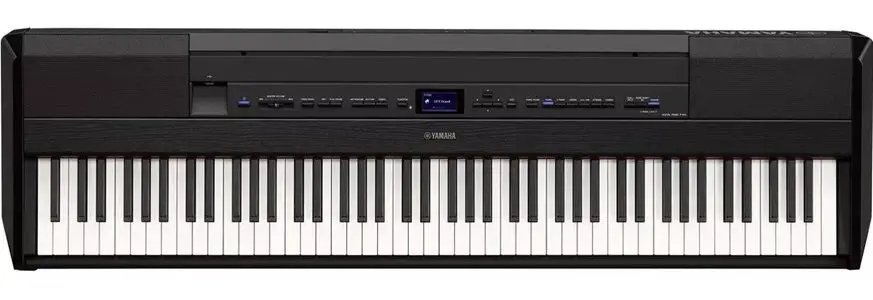
Yamaha P-515 is the top model in the popular P series and it replaced the popular P-255 digital piano. The piano comes with excellent pians sounds, including samples of Yamaha CFX and Bösendorfer Imperial grand pianos. It features NWX (Natural Wood X) keyboard action with escapement (synthetic ebony and ivory keytops) for realistic grand piano like feel and response. It can be used by players of all ages and levels.
Yamaha YDP-184
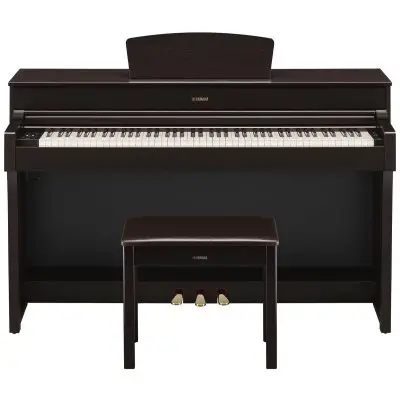
Yamaha YDP-184 is a console styled beautiful digital piano that comes with 24 instrument Voices, including the world-class CFX concert grand piano. It features Graded Hammer 3 (GH3) with synthetic ivory key tops for authentic playing experience.
16-track recorder, Polyphony: 256 Notes, Rhythm: 20
The Yamaha YDP-184 is an excellent ensemble piano with powerful built-in speakers; the piano not only sounds great but also looks great as a piece of furniture in the living room.
Yamaha DGX-670
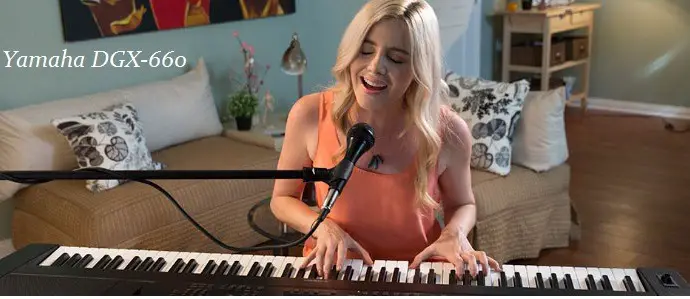
The Yamaha DGX-670 has been around for a long time and still is a very popular digital piano, thanks to its great value. The ensemble digital piano comes with built-in speakers and several useful features that make it a joy to learn and play music.
Graded Hammer Standard(GHS) keyboard, Polyphony: 192 notes, 6-track sequencer.
Alesis Recital Pro
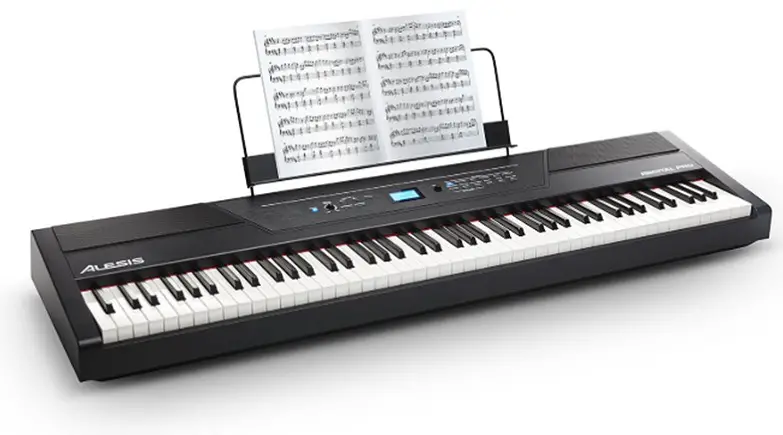
Need something inexpensive? The Alesis Recital Pro is a portable 88-key piano with hammer-action keys, which makes it great for students who want a piano with authentic piano action to practice.
Built-in speakers, USB Midi, Split/Layer.
Piano Accessories & Supplies
Review of all the accessories that are available for your digital piano keyboard. You may not need all of them now, probably some essential ones to make it more enjoyable to play. The piano accessories that you will need will depend on what sort of piano you own. If you own a portable stage piano (the more high-tech ones), then your requirement will be a bit different from what you would need assuming if you have a home piano, read more…
Digital Pianos: Buying Guide
Digital pianos are becoming better & affordable. Its really hard to believe that the digital pianos that we see today were massive instruments until a few decades back, and that it was invented way back in the 18th century.
Since then, pianos have undergone a sea change, trying to blend in the best of technology on its way. You can read about the differences between digital and acoustic pianos here.
Most of the top digital pianos now use sound samples taken from their best concert grand pianos and the key action is also very authentic. So ideally you should be able to play even the most difficult classical pieces on these digital pianos.
There are several different types of pianos available nowadays that vary in sizes and features.
With homes becoming compact, and more opportunities to perform, digital pianos have become more portable (their legs are detachable nowadays or they don’t come with legs at all, you have to use piano stands).
However, the best portable digital pianos still give you the authentic piano touch and realistic piano sounds and dynamics.
Read: Useful articles on keyboard instruments
.Most digital piano models come with 88 keys (weighted). However, you do get models with fewer keys (73 or 76) as well, to make them more portable. Popular piano brands/manufacturers include Yamaha, Casio, Roland, Kurzweil, Nord, Kawai. These brands offer an exciting range of electric pianos, ranging from the very basic to those that are loaded with several features.
You can read here to know about the best piano brands and series
However, do remember that when somebody recommends a brand or a model and says its the best, you have to take it with a pinch of salt as that person may be biased towards that particular brand if he/she has used it earlier.
So trust your ears and your instincts as well when choosing a digital piano.
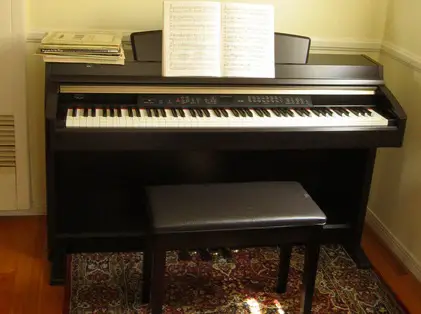
Buying a Digital Piano: Things to Remember
Most of the pianos listed here on this page are great options (for certain requirements) as each have their own benefits. We have selected these models based on several factors, such as sound quality, value and usefulness.
Here are few more important things to remember:
1. You can buy keyboards that have more than 61 keys for around three hundred dollars or so, but then they will not offer you proper weighted action, which is a must for serious piano playing. You can still get started though on them, if budget is a constraint. Pianos in this price point are good to get started as a beginner, and probably a couple of years down the line you can upgrade to a better one.
2. The ones in the $500 to $600 are much better in terms of the action, if you’re looking for a practice piano. Though it may not have all the bells and whistles, you can definitely expect to get good key action and piano sounds. You’ll still need to get a decent stand and more importantly a pedal board. Though these are good, you still may not be able to express yourself like on a real acoustic piano (if you’re an experience musician). These are good for beginners to less-than-intermediate level players.
3. The ones costing around $1000 are better and offers good value for money. Someone who is serious about learning to play the piano or someone looking for a good practice piano should definitely look in this range.
Most of the brands are the usual names, Casio continues to dominate the digital piano market in the entry-to-mid level segment (Williams has a couple of products in this range). Yamaha has offerings for players of all skill levels. Brands such as Roland & Nord have good products but at the higher price point.
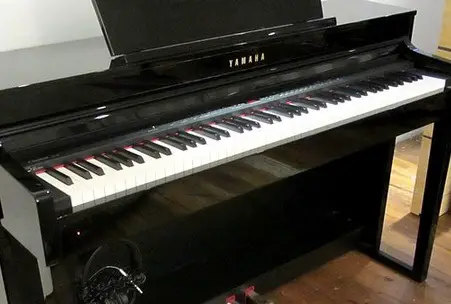
Digital piano prices would vary depending on its look and the features available. As a general guideline, the following are the digital piano prices you can expect to pay –
- Professional stage pianos – 2000 USD to 4000 USD
- Portable digital pianos – 500 USD to 1500 USD
- Upright Digital pianos – 1200 USD to 2000 USD
- Baby Grand/Grand Piano – around 4000 USD and above
Popular digital piano series
Here are some popular series of digital pianos:- Casio CDP, Privia and Celviano series
- Yamaha P, ARIUS YDP, Clavinova series
You also get premium digital pianos for home use and/or for performance. Roland HP & LX series, Yamaha Clavinovas, Yamaha NU1 are some of the premium pianos but are priced much higher than most of the pianos mentioned here.
Casio Privia vs. Yamaha P Pianos vs DGX / YPG series digital pianos – Price, Feature Comparison & Review
Casio Privia vs. Yamaha DGX, YPG, P series Digital Pianos: If you’re panning to buy a portable piano with fully weighted keyboard and nice piano sounds, you are likely to pick a piano from these series. Even those who wish to upgrade from their beginner keyboard can consider these series.
Casio Privia PX Pianos vs Yamaha P Series Pianos
Some of the products from the Casio Privia PX pianos bear some resemblance to the Yamaha P Series Pianos and so there are many potential buyers who would like to know how the pianos from these two series compare against each other.
Though there are many who think that a Yamaha piano would anyday beat a Casio, the fact remains that Casio Privia Pianos are doing well. They are built to a very high quality and are doing very good sales, especially in the entry level and mid-range piano segment.
So post all your queries and experiences regarding the Casio Privia PX pianos and the Yamaha P pianos.
Yamaha P series pianos include the P-255, P-155, P-45.
Casio Privia series include PX-160, PX-360, PX-560,PX-870,PX-5 Pianos
Reasons to Own a Casio Privia 88-Key Digital Piano
The Casio Privia 88 Key Digital Piano is the flagship stage piano from Casio. Available at an affordable cost with full sized, hammer action 88-keys, and loaded with many features, you can use the privia for learning the piano as well as for practice. This is probably the first time that a Casio piano keyboard is doing so well compared to its competitors. And even experienced musicians and piano players are considering the Casio Privia pianos to be a serious keyboard instrument to be played at home for learning or for piano practice.
With sleek looks and a much better sound, even seasoned players would love playing on this digital stage piano, besides of course beginners and intermediate players.
It is very recently that Casio has been introducing high end keyboards and pianos that is finding acceptance among the music fraternity. Though they still do not have top of the line music workstation keyboards, their Privia PX range of digital pianos are indeed making their presence felt. It is one of the most popular digital pianos at least in the sub $1000 dollar category.
You even get digital piano stands built specifically for the Casio Privia pianos; the Casio CS-67 is one such stand that is built specifically for the for the Privia piano. With all these features available, great looks and hammer action keys on the casio privia piano, you should consider buying a Casio Privia 88 Key Digital Piano.
So why should you even consider the Casio privia 88 key piano when there are so many other brands in the market? Here are 5 reasons why you should consider it.
1. Hammer Action Keys You get graded hammer action keys which mimics the action that is available on a real acoustic piano; harder to play on the lower octaves and lighter on the higher octaves.
2. Authentic Sounds The Casio Privia 88 Key Digital Piano uses much superior sound samples and so the quality of the piano sounds are much better compared to what is available on casio keyboards. If you have always felt that casio sounds are not up to the mark, you will change your views after hearing the Casio Privia 88 Key Digital Piano.
3. Built-in Piano Lessons If you have just started learning to play piano, you will find the built-in lessons in the Casio Privia much more helpful, and will help you to revise important concepts that you are already learning.
4. Competitive Pricing This is where Casio has always been quite aggressive. Compared to most products, the Casio Privia 88 Key Digital Piano is quite competitive but that does not mean they are of inferior quality. In fact their pricing makes the Privia a value-for-money buy considering the host of features it offers.
5. Other Features Besides the above, you can also expect to find accompaniments, effects and other sound editing parameters. You can even keep your Privia updated by downloading wave and midi files from the Internet.
These pianos are great looking and have superb sound quality, not to mention the affordability, and the variety of models that it offers to beginners and experienced players. You can use the Privia PX pianos for learning to play piano or for practicing as they have lot of features, lessons and come with hammer action keys.
The most important qualities of a Privia piano include 88 Hammer Action Keys, Authentic Sounds, Built-in Piano Lessons, Competitive Pricing, and Portability. Most serious piano players don’t care much about the other features but want a perfect keyboard touch and great sound quality.
The privia pianos have graded hammer action keys which emulates the action on real acoustic-pianos, harder to play the bass notes and lighter on the higher octaves. Experience piano players will really appreciate the graded hammer action keys since it feels like as if you are playing a real acoustic piano. These are harder to play on the lower octaves and lighter on the higher octaves.
The sound quality of a piano depends on the samples used, in this case the Casio Privia PX 88 Key Digital Piano sound quality is on par with some of the leading digital piano brands. Until a few years back, many users considered Casio sounds to be mediocre compared to other brands.
Beginners will also find an additional helpful feature – the Built-in piano lessons. Beginners can revise important musical concepts which they might already be learning from music teacher. In addition, you can find a privia piano model that fits your budget and requirements because there are various models that are available.
So if you are one of those, who doubt Casio keyboards capabilities, you need to check out these pianos. You will surely be impressed with the Casio Privia PX 88 Key Digital Piano.
Question:
Casio Privia or Yamaha DGX/YPG? I have moved to a new apartment (a bit smaller though) and I am looking for a portable digital piano. Of course, I want it to have the best of sounds and the action needs to be as close to a real piano. The two choices, which seems to be the obvious ones looking at most of the reviews online, are the Casio Privia pianos and the Yamaha DGX / YPG Digital Piano. I’m looking for proper weighted keys and not the semi-weighted ones that is available on some of the models in these series. Based on the my initial findings, I’m looking at the DGX 520 / 620 or the Privia PX 300, 310, 400 or 400 model depending on the offers I can find. Anybody has any experience with these models? Which one would be a better Buy?
Also Read: Difference between Yamaha DGX and Yamaha YPG
I have read lot of comments online which simply say that Yamaha is better because they sound better. Is there any other reason why you like a certain brand or model among Casio Privia vs. Yamaha DGX / YPG Digital Piano? Any help would be greatly appreciated. – Abdul Kazeem (London, UK)
Answers:
Yamaha sound, voicing’s and sequencing abilities have always been better. In terms of touch, I think only at the DGX 620 model you get proper weighted action, anything below that is semi-weighted. If you are looking for anything below Yamaha DGX 620, then you might as well check out the Casio privia pianos since they are not bad at all. I would say if you are a beginner or an intermediate level player looking for a value buy, then the Casio Privia should be fine. – Gavin
Also Read: Casio Privia PX vs Yamaha P series pianos
While comparing, the aspect of cost should not be overlooked. After all, to many users, it’s the Price-to-Features aspect that matters. As a piano teacher, I find that in the Casio Privia pianos. I use Casio Privia 110 for teaching. My students are mostly preschoolers and in early schooling, so I really don’t want a lot of sounds, styles, and extra buttons to teach them. Yamaha has a wide range of digital pianos and some of them are pretty fancy ones, that feel and sound just like the real thing, but then you pay for it. As simple as that! Instead of buying a couple of top of the line Yamaha pianos I have bought five casio privia pianos, which I have kept in my studio. I use them for group piano lessons. But at times, my daughters also practice on them individually, with headphones on, so that they can concentrate on their piano playing. – Katie
Useful Links:
This is what even I have been observing. Though Privia is not among the Roland and the Yamaha’s but they definitely are making a dent in their entry to middle range digital pianos. I guess, the only thing that is missing in the Casio Privia is refinement and robustness. For instance, I have a Casio privia and I like the keys, I also like the stereo piano sound, but I hate the pedals. You can definitely replace the foot pedal but the problem is some external pedals like the Korg foot pedals (which I like) don’t work with Casio. You have to get it re-wired, or buy the off brand pedal with the reverse wiring. Casio privia pianos also have a somewhat primitive accompaniment feature compared to a Yamaha, but not many piano players and learners care about it. I am sure in the years to come, Casio will definitely fix all such things which is holding back the Privia as a major brand. In the meantime though, they still sell a lot because of their value for money proposition. Yamaha is very good, especially in the high-end models, but for other models I think they are intentionally restricting the features. Maybe to create value since they know their branding is strong. This is where the money part comes into picture, and I guess I would go for the one with a better price. – Suresh
I have owned a Yamaha PSR s910 for some time now and I am naturally biased more towards the Yamaha. A few more things that you may want to know as my son’s school recently acquired a Casio Privia. They place the Casio Privia on an X-frame stand as it is much easier to move around. The stand it seems takes forever to assemble and disassemble. The headphones didn’t come with the package and the mic that came along with the box is not good either. I think they are now using a Shure mic to play with. Headphones is not a big deal though, you just need a set with a 1/4″ phono plug and a long cord (plugs in from the left side, nice that it doesn’t plug in from the back or front and interfere with your playing, but you do need enough cord to reach. And as mentioned in one of the earlier posts, Yamaha definitely provides much more choices when it comes to foot pedals. Casio is limited there. – Jack
This is just to let you all guys know that we had considered these two brands, but after trying out various keyboards, we opted for the M-Audio 88sx. We have owned several keyboards earlier, mostly Roland, and with different key actions (My husband has been a soloist at Lincoln Center). We have also owned a 76-key, so that it becomes easier to travel. We also own a stunning Steinway A3 squaretail grand, fully restored piano at our home. So, in case somebody is looking for a third option, you may also consider the M-Audio digital piano, we are satisfied with it. – Julia
Question:
Yamaha DGX-640 or P-95 piano? I am a pianist and have a question related to Yamaha Keyboards (Yamaha DGX-640 grand keyboard and P-95 digital piano in specific). I am looking for a digital piano and the most important factor I am looking for is the quality of the piano sounds and the keyboards touch. After doing some internet search and talking to a few people, I have zeroed-in on the Yamaha P-95 and the Yamaha DGX640 grand keyboard. The P-95 is a digital piano and the DGX-640 is an arranger-plus-synthesizer with full length 88-keys, just like a piano. My question is what would suit a pianist more…Yamaha P-95 piano or the Yamaha DGX-640 keyboard?
I have heard that the Yamaha P-series pianos are made specifically for pianists, those who want the rich sounds of a piano with graded hammer action. And this is what I am after, frankly speaking. The DGX 640 on the other hand is not much more expensive. So I was wondering if I should go in for this model and get those additional synthesizer / arranger features. But if the dgx640 grand keyboard’s piano sounds and keyboard touch sensitivity is not as great or at par with that of the P-95, then I am not interested in it. In that case I feel it may not be worth those extra bucks for the additional features it has.
I would really appreciate if somebody could throw light on the differences between the Yamaha P-95 digital piano and the Yamaha DGX-640 grand keyboard, particularly their sound quality and keyboard feel. – Kevin (Singapore)
Answers:
I would say the DGX-640 grand keyboard and the P-95 digital piano are the same – in terms of sound quality and the keyboard feel. Both have Graded Hammer Standard keyboard action, use high quality sound samples and come with built-in stereo speakers. But as you mentioned, the Yamaha P95 is more for pianists who are not interested in other sounds, rhythms and sequencing feature. It?s a piano-keyboard instrument that’s ready to be played when you are ready to play the piano. In that case a Yamaha P-95 will be apt. If you really enjoy playing songs on top of backing rhythms, want other sounds and rhythms for inspiration, need a built-in recorder, then you should consider the Yamaha DGX 640. – Suresh
The Yamaha P95 Digital Piano has fewer voices compared to the DGX-640 but it has good sound and keyboard touch.
Pros: Neat Design and easy to navigate, is very lightweight, has good touch and weighted keys
Cons: The sound seems to be relatively quiet even when on maximum; the included pedal seems to be a cheap quality thing but works fine.
The pedal is not a big concern though. It’s not a problem using it at home, but you may have to tape it probably if you decide to play it on stage. If you are playing on-stage, most of the things get taped or strapped down anyways, so you can do the same to the pedal as well. – RV
I’ve got the Yamaha P-95B piano. The main reason I purchased it is grounded on the point as being the closest possible digital piano in the budget range of $500-600. It sounds pretty good in the low and high registers. However within the proximity of middle C there exists a small deviation from a piano like sound quality. I think it’s because of the speakers since I’ve connected it to an external speaker set an it sounds wonderful and the register close to middle C sounds great. I decided to purchase this particular piano although it had few voices. If there is one improvement I would’ve like is it to have 128 polyphony instead of 64. This piano can record 1 track which is adequate. I also considered the Yamaha DGX 640 piano and it’s wide features was not my primary interest only that it have a good touch response and great sound quality. Both the DGX 640 and P95B are GHS so the only deciding factor is the sound quality. I think the price for the Yamaha P95B is great for anyone who is particularly interested in playing piano. – Anonymous
The Yamaha DGX-640 is far more superior than the Yamaha P-95. Here are the reasons why you should consider buying the Yamaha DGX-640:
1) If you you were to buy the P-95, you would only get the piano alone, no stand. If you bought the stand with this piano (which must be bought separately) then you would see that it would come to a grand total MORE than the DGX-640, which when bought comes with the stand included, and is much cheaper than the P-95 and the stand combined.
2) The P-95 and the DGX-640 use the exact same weighted key action and produce the exact same piano sounds. But the while the P-95 comes with only 10 voices, the DGX-640 comes with over 500 voices.
3) The DGX-640 features USB connectivity and more recording functions than the P-95. Furthermore, there is an LCD screen featured on the DGX-640 along with features such as education suites, something the P-95 does not include.
DGX-640 also has the Y.E.S. software built-in (Yamaha Educational Suite), which is quite good, along with many more sounds to choose from.
– Anonymous
Question:
Yamaha YPG 635 or DGX 640? I’m wondering if someone could help with my deciding between a Yamaha YPG 635 or DGX 640 grand keyboard? My son has moved away to a college and really misses our piano–a Clavinova CVP 205. He has a birthday coming up and I would like to send him an 88-key grand keyboard for his birthday. He loves and plays a lot of classical music as well as other styles. I want to have 88 keys and try and stay under $1000. Would so much appreciate any feedback! It seems the Yamaha DGX 640 88-key Keyboard is about $100 more but could be bought for the same price on the blowout option. Any suggestions would be so appreciated. – Laurie Demitry (Virginia)
Answers:
The Yamaha YPG 635 is comparable more with the DGX 630 grand piano keyboard. The reason the Yamaha DGX 640 88 key keyboard is more expensive is because it is a new entrant in the market, with additional features. Compared to the dgx-630, the DGX-640 has the option for connecting three pedals (instead of just sustain). It also has few more sounds. You may also want to read the difference between Yamaha DGX and YPG series so that you know there is no difference between Yamaha YPG 635 and the DGX 630. Since your son has moved to college, I doubt he may want the 3 pedal option. Can you ask him or do you want to keep it a surprise? If he doesn’t need it, you may choose the Yamaha YPG 635 over the DGX 640 and save those additional dollars. – Peter
Actually, both Yamaha DGX 630 and DGX 640 can use the same three pedals unit (the model is called Yamaha LP-7, in Europe at least). There is no difference in this regard whatsoever. I have to make the exact same choice right now and if I could buy a DGX 630 (635 – same thing) cheaper, I would buy it as the additions in DGX-640 are more about marketing and competition than anything else, IMHO. Yamaha had to put up a new model to keep up, so they added some new sounds or accompaniments to an already oversized set and pushed the speakers more into the middle to make it look different ;). As it is, where I live, most shops simply do not sell Yamaha DGX 630 anymore, so I have no choice. – Kestas
I’ve own a YPG-635 keyboard in my Florida home since 2008 and love it. Recently, I sold by Steinway Model B piano in my Chicago home and was looking for a replacement. Since the DGX-640 is supposed to replace the YPG-635 model, I played several of them and was disappointed. They brighten up the sound but IMO over did it and it sounds tiny and thin compared to the older model. Even more disturbing was that the action was stiffened and had a spring like resistance. I play mostly classical music which is quite demanding and I am very fussy regarding tone and touch. If I had no choice I could live with the changes made in the DGX since theses pianos offer so many features for the price it is a great bargain. I choose to buy a used YPG-635 since there was one available in a listing. – Anonymous
Personally, I feel, with a home digital piano…be it Yamaha YPG 635, Casio Privia PX-330 or any other 88 key weighted portable grand piano, you need to be comfortable with the feel of the keyboard…since different users may have different views on the keyboards touch and feel. Sound quality is also subjective since it may sound different at the store from what it may sound at your home (depends on the speakers, headphones used). So what should matter is the price-to-features aspect; see what gives you the most value for your bucks. Polyphony of 64 is preferable, since you can play complex arrangements and use all the features of a digital piano/keyboard (layers, splits, styles, etc.) without worrying about notes dropping-off. So if you think you are comfortable with the way the Casio Privia PX-330 feels and sounds…just go for it. Leave aside the Yamaha YPG 635 if you are not comfortable with it, it?s on the expensive side as well. – Suresh
Compared to a YPG 535, the Yamaha YPG-635 piano keyboard is definitely a better option if you really enjoy playing the piano, because its keys feel more like piano keys compared to the Yamaha YPG 535. Even if you’re not exactly a beginner, and are playing after many years, you’ll like the higher version better, especially if you’re okay to spend the extra bucks. If the keyboard feel does not matter that much, you can go with the Yamaha YPG 535 and save a few hundred bucks. In that case, you may even consider the Casio Privia series. – Bosco
Casio PX-330 digital piano is good, but then only for the given price. It could be better but then it would cost more. I also have a Yamaha Baby Grand piano, but then the Casio keys do not compare with it. IMHO, the Casio keys feel harder to press and do not have the dynamic range of the real pianos. On the positive side, the Casio px330 feels much better compared to the boards in this price range and has good volume/pressure sensitivity. Other features are similar to what you find in most DPs. Overall, the Casio px330 digital piano is an economical and quality substitute for an acoustic piano. If you are looking for a basic version of this keyboard instrument (budget constraint), without the additional patches, but with similar construction and piano sounds, then you may consider the Casio Privia PX-130 as well. I would say that the Casio privia PX-330 is one of the better digital pianos in it’s price range. You won’t get all these features in any other brand for this price. Besides, the alternatives mentioned before (except the Yamaha ypg) do not have accompaniments, if that is of any concern to you. Yamaha P95, Korg SP250, and Yamaha YPG 635 are good alternatives to the Casio privia px-330. They all have midi capability so that you can trigger synth sounds through it. They are good for solo performance as well. If triggering synth sounds is your main criteria, you could even do that using a lower privia model like the PX-130. But if you want more of synth sounds and other controller type features, are you sure you want a digital piano and not a synthesizer or a workstation? – Harry
KeytarHQ editorial team includes musicians who write and review products for pianists, keyboardists, guitarists & other musicians. KeytarHQ is the best online resource for information on keyboards, pianos, synths, keytars, guitars and music gear for musicians of all abilities, ages and interests.
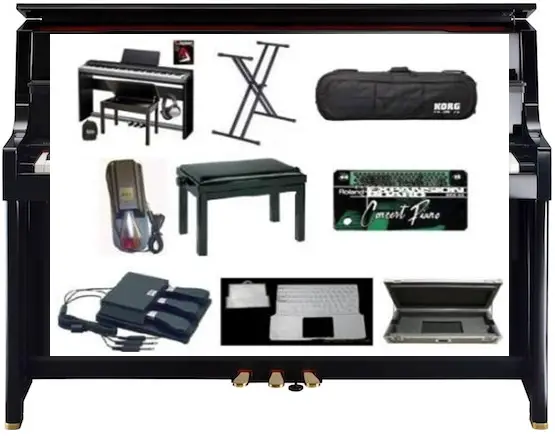



Yamaha, Roland, and Casio are the top brands for digital pianos, they sound nice and are built to high-quality standards. Most users, especially students and amateurs are opting for Casio nowadays, the mid-range Privia line and some of its Celviano models are very good. Yamaha also had got good pianos under P-Series, YPG and the ARIUS/YDP series. However, almost all of these manufacturers use jargon to talk about their sound quality and the piano action. For instance, Casio says it uses AiF linear morphing sound technology to create high-quality, dynamic sounds. However, a similarly priced piano from Yamaha or Roland is also going to sound similar (almost).